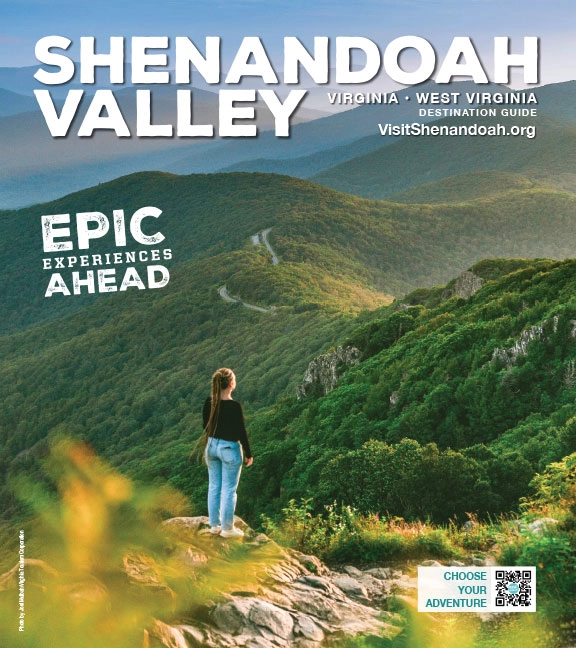The beautiful and historic Shenandoah Valley is part of the Great Valley, a large region that stretches from New York to Alabama. The Valley is flanked by the Blue Ridge Mountains to the east, the Allegheny Mountains to the west, and divided by the Shenandoah River.
Native American groups lived in and traversed the Valley for nearly 11,000 years before Europeans penetrated the mountain ranges in the 17th century. While a Jesuit priest is believed to have journeyed to the area in 1632, the man credited with first exploring the Valley was John Lederer, a German medical practitioner who visited in 1669. He left detailed records and crude maps. Additional early explorers included John Batts, Robert Fallam, and Virginia Governor Alexander Spotswood.
Permanent settlement began in the 1730s as German and Scotch-Irish immigrants from Pennsylvania began to arrive, attracted by the Valley’s fertile land. Many of the early settlers were Quakers who had good relations with the Indians. The Virginia government encouraged settlement on the western frontier to provide a buffer against the potential threat of Indians friendly with the French who were pushing south from Canada into the Ohio Valley. The Indian raids during the French and Indian War (1754-1763) marked the last major presence of Native Americans in the Valley. The Warriors Path long used to traverse the Valley is today known as Route 11, part of which was surveyed by George Washington.
Along this historic Valley route (also referred to as The Wilderness Road: Virginia’s Heritage Migration Route) passed giants of their day: frontiersman Daniel Boone and future presidents Adams, Jefferson, Madison, Monroe, and Jackson. Along the route, the patriotic priest John Peter Muhlenburg preached revolution and helped form the Eighth Virginia Regiment of Continentals, made up of Valley soldiers.
The Shenandoah Valley offers an unmatched perspective of the American Civil War, as soldiers who wore blue clashed with those in gray under the leadership of Jackson, Early, Gordon, Sheridan, Banks, and Custer. The result? More than 325 military engagements, 14 battles, 3 years of bloody campaigning…and almost 4000 souls who never returned home.
Thanks to its unique geography and agricultural abundance, the Shenandoah Valley was critical to both sides during the Civil War—indeed, numerous military campaigns were waged here. Because much of the landscape remains unchanged, modern visitors can retrace the steps of Stonewall Jackson’s 1862 Valley Campaign, Lee’s invasion north in what would be the Gettysburg Campaign, and the campaigns of 1864 including Philip Sheridan’s Shenandoah Campaign. With its broad, sweeping campaigns, its effect on the civilian population, and above all, the accounts of the soldiers and officers who fought its battles, the Valley is a significant part of the Civil War story.
Today, the Shenandoah Valley remains a vibrant, historic region especially touched by nature. Its postcard-like scenery, rich history, incomparable natural resources, outstanding recreational opportunities, fertile fields, and friendly people beckon tens of thousands of travelers who visit the region each year.





